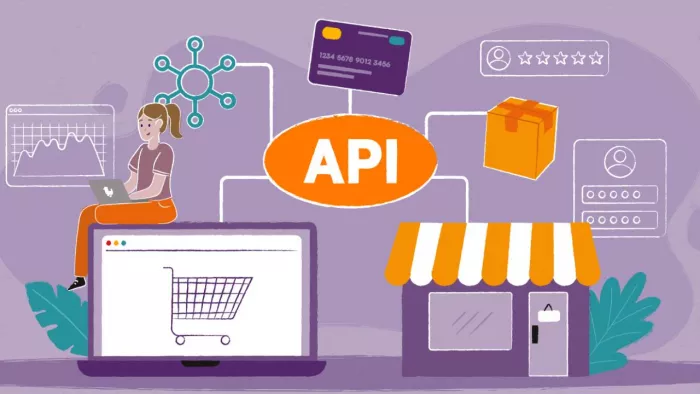
For online sellers, tracking customer behavior is now as important as ever. However, branding and advertising strategies are becoming more difficult to achieve in today’s privacy-focused environment, where cookie tracking is getting less trustworthy. This is exactly where conversion APIs come in handy.
Let's discuss on what they are, how they function, and most importantly why they’re vital for your store.
What Are Conversion APIs?
What is a conversion API?
You can think of it as a confidential connection used by your website and its tracking tools which operates like a ‘private line’ For instance, rather than relying on the browser cookies that can be either deleted or blocked, conversion APIs would send data straight from the server to Meta, Google or any other advertisement tool.
It works like bypassing middlemen.
This approach definitely increases efficiency. Clean and accurate data still can be acquired even if the user’s browser tricks disrupt things. You don’t lose conversions because a user utilized an ad blocker.

In simple words, it’s a server-to-server tracking tool that allows tracking user’s activity post clicking an ad like buying something, signing up or adding items to their carts.
And the best part? You are in the clear when it comes to privacy tools as well. It avoids using a browser, so privacy rules are adhered to without sacrificing the information necessary for optimizing ads and sales.
How Conversion APIs Work
Imagine someone clicked on an advertisement for your shoes.
Typically, your site would place a cookie to track that click and if a purchase is made, the cookie would communicate to your ad platform, “Hey! That ad worked!”
However, that’s no longer the case for many users. Some browsers have taken the approach of blocking cookies, while others have taken a more aggressive approach of outright deleting them.
This is where conversion APIs steps in. With conversion APIs, your server tracks the click, instead of the browser. Then, when the user purchases the shoes, your server notifies the ad platform about the purchase—no cookie required.
Here’s a basic process:
| Step | Action |
| 1 | User clicks on your ad |
| 2 | Your site notes the click server-side |
| 3 | User makes a purchase |
| 4 | Your server sends the sale info to the platform via conversion API |
Doesn’t this look good?
This allows you to track buy actions, sign-ups and downloads even when cookies fail.
No need to worry. You aren’t sending personal secrets. The data is hashed, anonymized, and sent securely, which keeps things legal and clean.
Facebook and Google, for example, supports such an API. You just need to plug it into your system. It sounds techy; however, setup is made simple by many tools, especially those with support for API integration.
This way, instead of “maybe” tracking stuff, there is a full and clear picture. Each and every time.
Why Should e-commerce Brands Care
So, why should e-commerce brands really care about conversion APIs?
This is the answer.
1. No Cookie Worries
Blocked or deleted cookies leads to broken tracking. But with a conversion API, you track conversions directly so accuracy improves even when cookies mess up.
2. Improved Accuracy in Ad Performance
When your tracking is off, your ads suffer. You might turn off a great ad just because it looks like it’s not working. With server-side tracking, your data stays solid. This aids with marketing attribution which shows what activities are driving sales and what’s not.
3. Complies with Privacy Regulations
The U.S, EU, and Canada have all shown their concern around data usage. Brands reliant on outdated tracking systems must be nervous. But on the other hand, conversion APIs are compliant with such restrictions. They maintain confidentiality and privacy of the data.
4. Improved Advertising Strategy
Ad platforms rely on data to improve performance. Without data insight into what works, ads stagnate. APIs provide additional information to adapt in real time. That translates to improved targeting, enhanced delivery, and better observed results.
5. Instant Updates
You don’t need to wait hours or days to analyze results when data is available in real-time. Adjustments can be made instantly. This is beneficial during sales or new product launches.
6. Less Incomplete Analysis
Have you ever checked gaps in analytics and found that some days just do not add up? This happens because of blocked cookies. With APIs, gaps in analytics data can be narrowed down, which means blocked cookies won’t provide a skewed view of what’s actually happening.
There’s no denying ads are costly. If your tracking is lacking, you’re wasting money.
This is the reason why Redtrack tracking platform has included support for conversion APIs due to problems with tracking. Special coding is no longer necessary.
If you want lower stress and cleaner data, conversion APIs will provide you with what you need.
Getting Started with the Right Platform
You are ready to use the conversion API. What is the next step?
The good news is that it does not have to be built from the ground up. Numerous platforms can assist you.
Look for the following:
| Feature | Why It Matters |
| Easy API integration | You don’t want to spend weeks setting it up |
| Real-time data | So you can adjust fast |
| Multichannel support | Works with Facebook, Google, TikTok, etc. |
| Privacy compliance | Keeps you safe with GDPR and CCPA |
| Helpful support team | When things go wrong, you want help |
A platform like Red Track checks all those boxes.
Instead of trying to figure out where your sales come from, these platforms show you the path clearly. It answers questions like what ad led to the purchase? Which channel performs the best? Everything is accessible.
If you are using Google Ads or Meta ads, they tend to offer plug and play features. Zipping through the setup process and utilizing minimal coding is a win in achieving more results.
You can also create detailed reports, ensuring you are prepared for any tough questions on ROI.
As a last piece of advice, focus on a single tracking event, be it purchases or sign-ups, and build from there.
Staying focused on one feature at a time allows for step-by-step progress rather than getting stuck in tech lingo.
Final Thoughts
Although conversion APIs can sound intimidating, there’s no need to worry as they are designed to make tracking the most vital aspects more efficient.
They strive to help repair broken tracking, adhere to privacy regulations, and improve advertising efforts. If you want to take tracking your e-commerce data seriously, old methods need to be tossed out in exchange for an API-first strategy.
With the right approach, guesswork and the chance of missing out on sales becomes guaranteed with structured, reliable data.
So, are you ready for the switch?





Comments